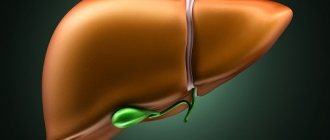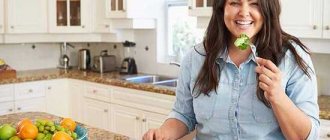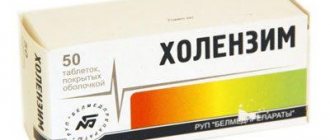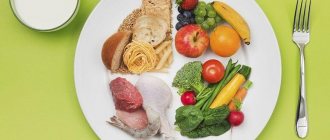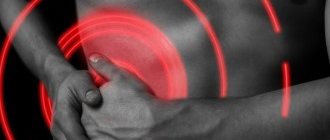What is allowed?
It is important to eat more fresh fruits and vegetables, as they have a mild choleretic effect and improve intestinal motility.
Dry cookies are a good option for breakfast or a small snack during the day. It will help you quickly satisfy your hunger and will not harm your health. It is also not forbidden to drink a raw egg, but this is not for everyone.
Inflammation of the gallbladder is not such a death sentence for the patient, since there are a number of foods that can still be eaten. These include:
- low-fat dairy products: milk powder, cheeses, cottage cheese;
- porridge, beans, pasta;
- soups with milk or fruit broth. Vegetable soups also go well;
- you can also eat vegetable oil and even butter, but only in very small quantities;
- the meat should be lean. The best food to eat for inflammation of the gallbladder is chicken or beef. Fish is not prohibited, but also low-fat varieties. It is better to steam or boil it;
- You can eat any greens; canned green peas and cabbage are also allowed;
- jam and honey, sugar can be consumed for this disease.
Forbidden foods
Fatty foods are the body's enemy when the gallbladder is inflamed.
With this disease, you should immediately stop eating fried, spicy and fatty foods. These foods can cause increased secretion from the pancreas and stomach, which is undesirable if you have an inflamed gallbladder.
Refusal of junk food requires the patient to put in a lot of effort and willpower, but taking care of health in this case should be above all else.
Food can only be taken warm, and it is also better to avoid cold and hot food. It is better not to eat sour fruits at all. Also, you should not eat food that is too salty; it is better to undersalt it a little.
From here the logical conclusion follows that homemade marinades and salted preparations from vegetables and mushrooms should be left in the past. The same goes for buns and any other sweets.
Of course, this requirement will be a great test for those with a sweet tooth, but if we are talking about maintaining good health or generally preserving life, something needs to be sacrificed. In case of inflammation of the gallbladder, you will have to give up fresh bread. You need to wait until it gets a little stale the next day and then eat it.
As for coffee and alcoholic beverages, in this case there is a complete ban. This is necessary so as not to lead to progression of the disease and severe complications. Fried and boiled eggs should also not be included in your diet. They are contraindicated for any problems with the gallbladder.
In case of acute inflammation, the diet should not contain sauces, fish or meat broths, or smoked products. Many vegetables are also completely prohibited: beans, peas, soybeans, white cabbage and others.
Diet for chronic and acute cholecystitis of the gallbladder and liver in adults
The liver and gallbladder are digestive organs that have a huge number of functions. Due to various circumstances, these organs can become inflamed:
- inflammation of the liver is called hepatitis
- inflammation of the gallbladder is called cholecystitis
In both of these conditions, the person is in serious condition:
- he experiences pain in the right hypochondrium, which soon spreads throughout the body
- he feels nauseous and vomits
- his eyes and skin may turn yellow
- his temperature may rise
Treatment of cholecystitis or hepatitis (often these diseases are concomitant) is long and complex. Its obligatory element is diet therapy.
IMPORTANT: For acute and chronic cholecystitis, cholelithiasis, hepatitis, cirrhosis of the liver, a specially developed therapeutic diet is prescribed - table No. 5.
This diet has a number of features:
- is gentle
- provides for a slight reduction in caloric intake
- involves reducing the consumption of fats and foods that increase cholesterol
Approximate diet
In acute and severe forms of cholecystitis, you can eat nothing at all for the whole day. The gallbladder will only thank you. Instead of food, juices from fruits and berries, diluted with water, as well as rosehip decoction or sweet tea are suitable. Mineral water can be taken as the main liquid. You need to drink it several times a day and add crackers to it.
When the patient's condition improves, pureed food is included in the diet. These can be porridges made from rice, semolina, oats, as well as slimy pureed soups from the same cereals. An ideal addition to the diet would be low-fat cottage cheese and fish, pureed meat, jellies, jelly and mousses.
For fasting days, you can use a cottage cheese-kefir, rice-compote, fruit, and grape diet. If there is no pain, you need to follow diet No. 5. It includes equal amounts of vegetable and animal fats.
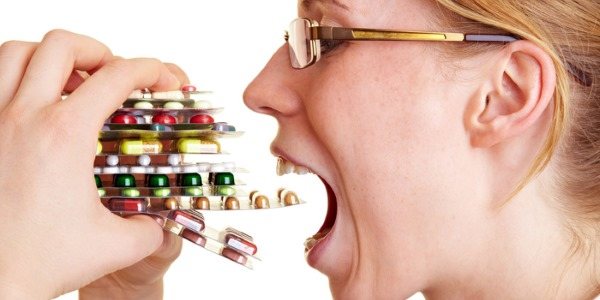
When treating cholecystitis, it is important to follow not only the prescribed therapy, but also the appropriate diet. This will help cure the disease faster.
Menu option for cholecystitis
For breakfast you can prepare oatmeal with sausage, cottage cheese casserole with raisins, lazy dumplings, millet porridge. On the third day you can drink tea, rosehip decoction, coffee with milk, jelly.
For second breakfast you can serve banana and cottage cheese, salad of apples and pears with honey, sandwiches with squash caviar, baked pumpkin. For lunch, the following dishes are usually prepared: - vegetable soup with wheat cereals, peppers stuffed with meat and rice, buckwheat porridge with a steamed cutlet, pureed vegetable soup with herbs, mashed potatoes, with lean boiled fish and tomatoes. As a third, you can serve tea, compote or jelly.
For an afternoon snack you can eat Adyghe or curd cheese, tomatoes with herbs, tea or compote. For dinner, milk rice soup with cookies, vinaigrette, omelet with herbs, macaroni and cheese, fruit pilaf, vegetable stew are suitable. For the third course, tea with milk, rosehip infusion, and compote are served.
How long to observe food restrictions
A strict diet is prescribed for exacerbation of cholecystitis. After the pain is relieved, the patient is transferred about a month later to diet No. 5a. Then, for a long time, the patient needs to follow diet No. 5 to avoid complications and remissions of the disease.
Diet for cholecystitis in children, menu
If a child has problems with the liver and gall bladder, the doctor prescribes diet No. 5, and the parents get scared.
- Firstly, it seems to them that the list of prohibitions is so long that they will have nothing to feed their child
- Secondly, they don’t know if they have the willpower to deny their baby sweets
IMPORTANT: Parents' concerns are absolutely groundless. The treatment menu for cholecystitis in children cannot be called overly strict.
It is not much different from an ordinary children's menu, if parents feed the child correctly. You can prepare a huge number of delicious dishes from permitted products.
Attitude to alcohol and feasts
Alcohol is strictly prohibited for cholecystitis. It leads to the appearance of new gallstones and the risk of developing hepatic colic. In addition, with cholecystitis, alcoholic beverages cannot be taken for the reason that they are usually drunk cold, and this is prohibited for this disease.
Once every 3 months you can take a small amount of alcohol for some holiday. But the dose should really be very small, no more than 100 grams. The general principle of treatment and diet for cholecystitis is not to drink alcohol at all and to prevent the disease from exacerbating.
Diet rules
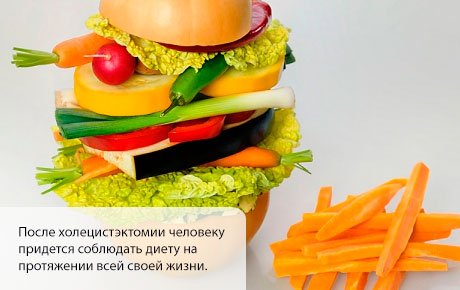
General rules
Table number 5 is a therapeutic diet, which is intended for patients with inflammation of the gallbladder and liver dysfunction. It is indicated for:
A diet for acute cholecystitis involves reducing the load on the gastrointestinal tract. If the gallbladder is affected, limit the consumption of animal fats and cholesterol-containing foods. To eat healthy, you should give up fatty and fried foods in favor of boiled and stewed vegetables and dietary meat.
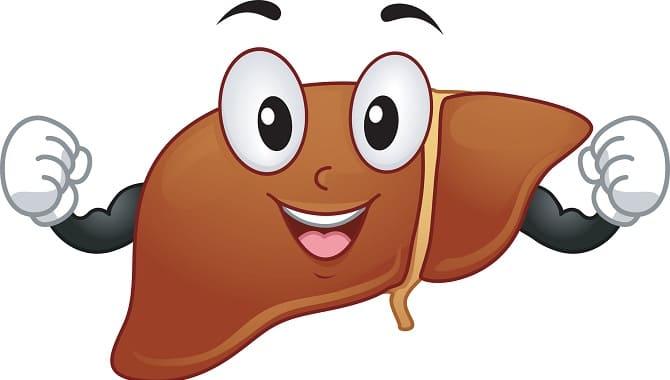
A balanced diet for cholecystitis reduces the load on the liver and stimulates the contraction of smooth muscles of the gall bladder. This promotes the flow of bile into the intestines and improves digestion.
- reduce daily protein intake to 80 g, and carbohydrates to 200 g;
- the amount of fat is limited as much as possible;
- eat fractionally in small portions up to 5 times a day;
- the calorie content of the daily diet is reduced to 1600 kcal;
- vegetables with fiber are ground before consumption;
- exclude products with oxalic acid;
- Vegetable fats are used to dress salads;
- food is prepared without salt in the form of liquid soups and purees.
In case of relapses of calculous cholecystitis, eat only light meals prepared at home. To prevent bowel dysfunction, avoid fast food and sweet soda.
Particular attention is paid to the drinking regime. To improve digestion and bowel movements, it is recommended to drink at least 2 liters of still mineral or medicinal table water.
Basic principles of the liver diet
The main function of the liver is to process harmful substances that enter the body with food, medications, alcoholic beverages, and remove excess hormones and toxic intermediate or end products of metabolism.
Diseases of this gland in terms of prevalence, according to statistics, occupy third place after neurological disorders and cardiovascular pathologies. Diet for a diseased liver plays an important role in the treatment of diseases, since adherence to a certain diet helps normalize metabolism and restore liver function. The patient’s daily diet for various diseases of the exocrine gland is selected individually and is formed according to the following principles:
- BJU ratio (proteins-fats-carbohydrates): easily digestible protein - 150 g, vegetable and animal in equal parts; carbohydrates up to 450 g (reduced if overweight); fats are reduced as much as possible, the daily norm is determined individually.
- Fried foods are excluded; food is boiled, stewed, steamed or baked. To reduce the load in case of impaired liver function, products must be crushed, ground, and thoroughly boiled.
- The amount of salt is reduced as much as possible.
- Preference is given to frequent fractional meals.
- Drinking regime – from 1.5 to 2.5 l/day.
When following a diet to treat the liver, you need to know not only healthy foods, but also how to use them correctly. So, you need to eat often, but in small portions. Such fractional nutrition will allow all useful substances to be maximally absorbed by the body and cleanse the liver. You need to eat up to 4-6 times a day, at the same time. If this condition is met, the outflow of bile will be stimulated, which speeds up the digestion of food.
For any liver disease, you should give preference to protein foods. Of course, a diet without fats and carbohydrates will not be balanced or complete. But their level needs to be dosed. But the protein level should be maximum. If we talk about the calorie content of food, it is completely individual. On average, you need to consume 2800-3400 kcal per day. It all depends on the age, weight, height of the patient.
How to cook food properly? During the treatment of liver diseases, you need to avoid fried foods. All products must be steamed. This is the best cooking option. Since this heat treatment preserves all the beneficial vitamins, microelements, and minerals of food. Boiling and baking are considered acceptable.
All dishes, except fresh vegetables and fruits, must comply with the temperature regime. So, you should not eat food that is too hot or cold. Its temperature should be about 55 degrees. When the liver is inflamed, it is strictly contraindicated to eat unhealthy snacks, dry food, chaotically, or fast. All meals should be scheduled according to the hour, which cannot be missed. As an afternoon snack or snack, you can eat vegetables, fruits, and dairy products.
Among other principles of the diet, it is worth highlighting the following:
- Do not overuse animal fats. So, 70% of all daily fats should be of plant origin.
- Compliance with drinking regime. If the liver is inflamed, you can drink purified non-carbonated water, compotes, fruit drinks, and fresh juices.
- For any liver disease, you need to follow diet No. 5 according to Pevzner. When a state of remission is achieved, table No. 5 is followed, and in case of exacerbation, diet No. 5a is followed.
- For the first couple of weeks, the most strict diet is followed to eliminate the symptoms of the disease.
- For the next 3-4 weeks, you need to eat pureed, crushed food so as not to put additional stress on the liver and other digestive organs.
The liver and gallbladder are organs whose connection is obvious. If a pathology of one organ occurs, after some time the work of the other will be disrupted. That is why, in case of malfunctions in the functionality of the liver and gall bladder, the same dietary nutrition is prescribed.
The main symptoms of diseases of these organs include the presence of:
- pain in the right hypochondrium;
- urges of nausea and vomiting;
- high temperature.
Treatment of these organs is long and difficult. Proper nutrition plays a very important role in it: the result of therapy largely depends on strict adherence to the diet.
Features of the diet for diseases of the liver, gall bladder, and pancreas are that it:
- is quite diverse and does not force you to adhere to strict rules;
- reduces the calorie content in the daily diet;
- Minimizes the consumption of fatty, cholesterol-rich foods.
For pathologies of the liver and gall bladder, experts recommend diet No. 5 according to Pevzner. Diet No. 5 is a specially developed complex, with the help of which the liver and gallbladder are relieved, inflammation is relieved, and the functioning of these organs returns to normal.
The diet has some features that must be observed:
- The calorie content of the daily diet should be no more than 2400-2800 kcal. Upper and lower positions are calculated taking into account the patient's age, gender, weight and lifestyle.
- The daily diet must contain proteins - 50% plant and 50% animal (up to 80 g), fats (up to 90 g), complex carbohydrates (up to 350 g).
- During the day you need to drink at least 1.5-2 liters of water. If the patient does not have problems with the kidneys or heart, the volume of fluid drunk can be increased to 3 liters.
- Salt should be consumed in minimal quantities (no more than 10 g per day).
- All dishes should be prepared only in gentle ways: they should be served boiled, stewed or baked. It is better to eat plant foods raw, but you must always remember that some of them are strictly prohibited.
- Food should be warm, not cold or hot.
You will have to follow the rules of dietary nutrition for diseases of the liver and gall bladder for at least a year, and in particularly difficult situations - for the rest of your life. However, each case requires an individual approach, and the duration of the diet should be discussed with your doctor.
What you can and cannot eat with cholecystitis: list of products
Poor nutrition is one of the key factors causing cholecystitis. Therefore, during therapy, special attention is paid to compliance with the dietary program. The diet for cholecystitis of the gallbladder should be followed for at least 1 month.
To reduce the load on the liver, gall and gastrointestinal tract, all products are divided into 2 categories:
- allowed - improve bile excretion, stimulate the functions of the digestive system;
- prohibited - cause flatulence, fermentation in the intestines, stool disorders.
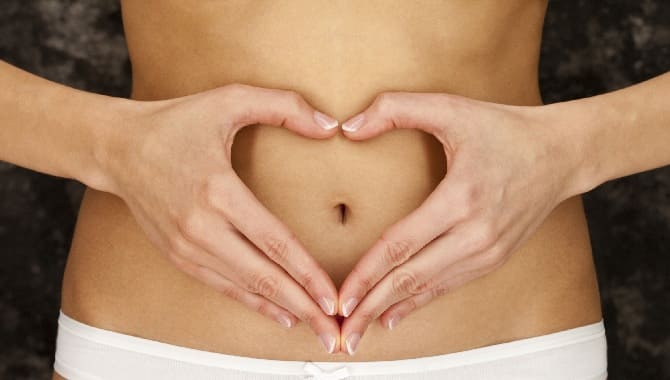
The key vector of the therapeutic diet is aimed at minimizing the load on the intestines, duodenum, and detoxification organs - the kidneys and liver.
- muesli;
- fresh oysters;
- milk;
- weak green tea;
- chicken breast;
- bananas (no more than 1-2 per day);
- crackers;
- braised cabbage;
- sauerkraut (without vinegar);
- pumpkin porridge;
- homemade yoghurts;
- apples;
- low-fat kefir;
- seaweed;
- oat cookies;
- green beans;
- wheat bread;
- dried dried apricots;
- buckwheat;
- olive oil;
- non-sour jam;
- semolina;
- marmalade;
- low-fat cottage cheese;
- lean fish.
In case of calculous cholecystitis, it is necessary to limit the consumption of high-fat fermented milk products and fresh vegetables. To avoid constipation, indigestion and flatulence, you need to remove the following products from the menu:
- citrus;
- chicory;
- strong tea;
- dates;
- okroshka;
- coffee;
- legumes;
- corn grits;
- carbonated drinks;
- pasta;
- offal;
- smoked fish;
- quail eggs;
- crab sticks;
- pork fat;
- fresh bread;
- baked goods;
- salted cheeses;
- asparagus;
- eggplant;
- dill;
- arugula;
- tomato paste;
- corn;
- ginger.
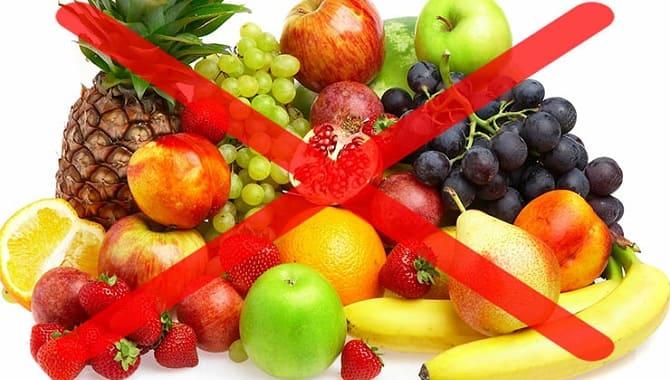
With cholecystitis, fresh fruits and fried egg dishes are almost completely excluded. Failure to comply with the diet is fraught with increased viscosity of bile, stone formation in the bile ducts and bladder.
Diet features
Reducing the load on affected organs is a key task of rational nutrition. Features of the diet are determined by the nature of inflammation, the presence of stones, pathogenic flora in the gallbladder, etc. Acalculous cholecystitis occurs against the background of atony of the bile ducts in the absence of stones. In this case, the diet will be less strict than with the calculous form.
Acute cholecystitis
Nutrition for inflammation of the gallbladder should be balanced and gentle.
Due to the increase in edema, the movement of bile into the small intestine slows down. To make you feel better, follow a fasting diet.
In case of cholecystitis, pay attention to the drinking regime. Allowed to use:
- still water;
- weak tea;
- chamomile infusion;
- vegetable juices.
On day 3, therapeutic nutrition is prescribed - diet No. 5B. It is recommended to follow it for at least 6 days. Useful products include:
- crackers;
- liquid soups from semolina, oatmeal;
- dietary meat;
- vegetable juices;
- Rye bread;
- boiled fish;
- boiled vegetables in grated form;
- low-fat kefir.
After 10-14 days, patients are transferred to the 5A diet. It excludes dishes and products that cause rotting, gas formation, and fermentation:
- legumes;
- mushroom broths;
- White cabbage;
- offal;
- fatty fish;
- sweet fruits;
- sour vegetables.
Diets are followed for at least 1.5-2 weeks. For cholecystitis, fried vegetables are replaced with boiled, baked or steamed ones.
Exacerbation of chronic
The diet for an inflamed gallbladder is not much different from that followed for acute cholecystitis. For 2 weeks do not eat fried foods, legumes, coffee and vegetables with fiber.
In case of relapses of cholecystitis, patients are transferred to dietary nutrition in compliance with diet No. 5A.
To improve digestion use:
- cream soups with grated vegetables;
- turkey;
- rabbit meat;
- chicken breast;
- low-fat fermented milk products;
- stale wheat bread;
- weak tea;
- pureed dried fruits;
- mashed boiled potatoes;
- steamed fish cutlets.
To soften stools and speed up metabolism, consume more liquid - at least 1.5-2 liters per day.
Remission period
Preventing excess stress on the liver and gall bladder is the key principle of the diet without relapse. Patients with indolent inflammation of the bladder are prescribed a basic treatment program - table No. 5. The diet for chronic cholecystitis is followed for life.
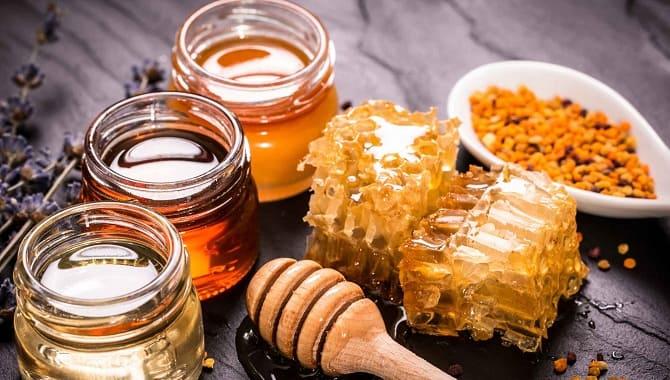
For any form of cholecystitis, honey is included in the diet, as it has pronounced anti-inflammatory and choleretic properties.
- vegetables for cream soups are ground;
- stringy meat is ground in a meat grinder;
- eat small portions every 2 hours;
- drink up to 2 liters of water per day.
The diet includes foods that stimulate bile flow:
- salads seasoned with vegetable oil;
- buckwheat, pearl barley, oatmeal;
- boiled vegetables;
- baked apples;
- protein omelettes.
Non-calculous chronic cholecystitis is often aggravated by the consumption of heavy foods, puff pastry and alcohol. Therefore, they are not consumed as part of the diet.
After cholecystectomy
If patients with cholecystitis cannot be cured by conservative methods, they resort to cholecystectomy - excision of the gallbladder. Diet is one of the main components of the rehabilitation program.
- half a day after the operation, drink up to ½ liter of still water;
- on day 2, weak tea, low-fat kefir and compote are introduced into the diet;
- after 3 days it is allowed to consume up to 150 g of mashed potatoes, fish cakes, marmalade;
- On the 5th day, biscuits, oatmeal porridge, and chopped dietary meat are allowed.
Diet for liver diseases
Let's talk about such serious diseases as hepatitis and cirrhosis. Let's find out the nutritional features in each case.
Hepatitis
Hepatitis is an inflammation of the liver tissue. The disease may be viral or toxic in origin. In the latter case, an inflammatory reaction can be provoked by chemical poisoning, alcoholism, or uncontrolled use of certain medications.
Nutrition for liver hepatosis
For a long time, the disease can be asymptomatic, but pathological processes actively develop in the organ: hepatocytes degenerate into connective tissue, the liver increases in size.
As the disease progresses, patients begin to complain of weakness, fatigue, jaundice, lack of appetite, nausea, and pain in the right hypochondrium. The feces become lighter, and the urine, on the contrary, becomes dark.
The liver produces the necessary enzymes for normal digestion of food, and also removes harmful substances. When inflammation occurs, it is difficult for the organ to cope with these functions. The load on healthy liver cells increases significantly. In order to help them, it is necessary to reduce the load on the organ. This is exactly what diet will help with.
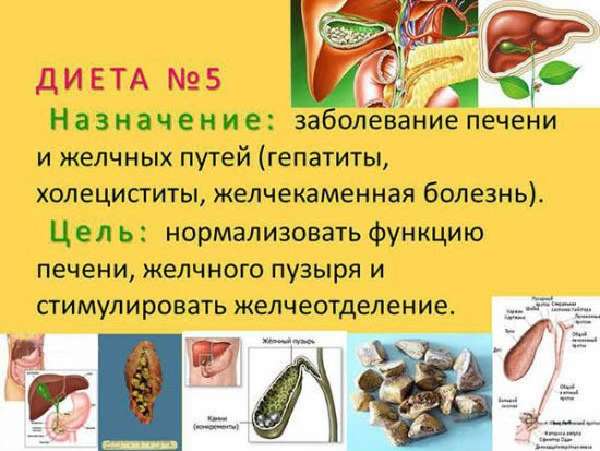
For diseases of the liver and gall bladder, treatment table No. 5 is prescribed
For hepatitis of any etiology, the following products are allowed for consumption: black and white bread, vegetable broths, boiled lean meat (chicken, turkey, veal, rabbit), cereals, steamed omelet, baked vegetables: cabbage, tomatoes, beets, carrots, zucchini , vegetable and butter, fruit juices and weak tea.
But there are also prohibited products. Patients are strictly prohibited from eating baked goods, fatty meats and rich broths, legumes, full-fat milk, chocolate, onions, garlic, coffee, horseradish, pepper, and mustard.
Cirrhosis
Liver cirrhosis is a widespread lesion that leads to tissue death. This is fraught with a decrease in functional activity up to loss of performance. The disease affects the quality of life and can cause death. In twenty percent of cases, cirrhosis is discovered after death. Viral hepatitis, biliary tract diseases, alcoholism and much more can provoke the death of liver tissue.
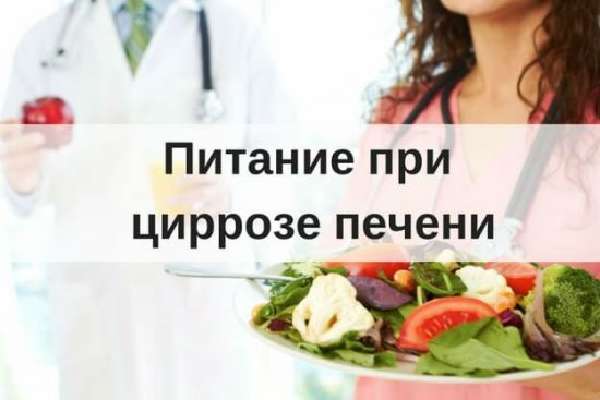
Therapeutic nutrition can prevent further progression of pathology and the development of complications, normalize metabolic processes, and also strengthen the immune system
Experts distinguish between compensated and decompensated cirrhosis of the liver. In the first case, the organ is not completely covered with scar tissue and is partially able to perform its functions. The decompensated stage poses a danger to the patient’s life.
For cirrhosis, preference is given to the following products:
- cottage cheese;
- egg white;
- milk;
- lean fish;
- beef;
- porridge: oatmeal, buckwheat, millet.
You should exclude the meat of chickens, ducks, chickens, lamb, pork, as well as fatty fish: sturgeon, beluga, catfish. Cocoa, chocolate, ice cream, horseradish, mustard - all this is also prohibited.
Important! If you have cirrhosis, you should stick to the diet for life.
Separate mention should be made of biliary cirrhosis, which develops against the background of damage to the bile ducts. Patients are often bothered by itchy skin, especially at night. As the disease progresses, the itching becomes simply unbearable. Due to difficult absorption of vitamins and nutrients, hypovitaminosis develops.
The basis of the diet for biliary cirrhosis is pureed cereals and liquid soups. Avoid whole milk, honey, and jam. Foods that have a laxative effect should also be avoided. For example, we are talking about beets, cabbage, pumpkin. It is important to limit the consumption of products that contain essential oils: sorrel, spinach, radish, green onions, garlic.
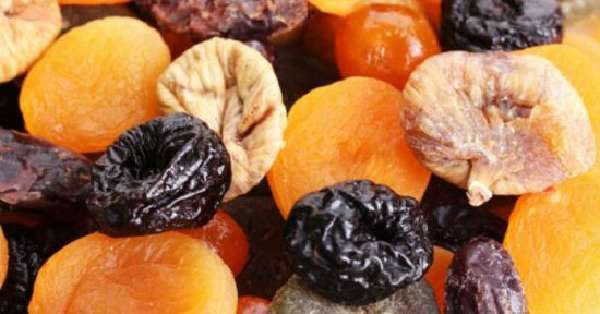
If the patient is concerned about constipation, then it is useful to include prunes, dried apricots, figs, raisins, plums, and boiled beets in the diet
Often, cirrhosis causes a decrease in appetite or even an aversion to food. In this case, the menu should include more sour fruits, berries and juices, as well as vegetable salads.
Sample menu for the week
The menu for chronic cholecystitis is compiled taking into account the following rules:
- the daily weight of food taken is 3-3.5 kg;
- food is taken every 2-2.5 hours in small portions;
- in the intervals between two main meals, make 2 additional ones;
- vegetable salads are seasoned exclusively with vegetable oils;
- dietary meat is steamed or boiled.
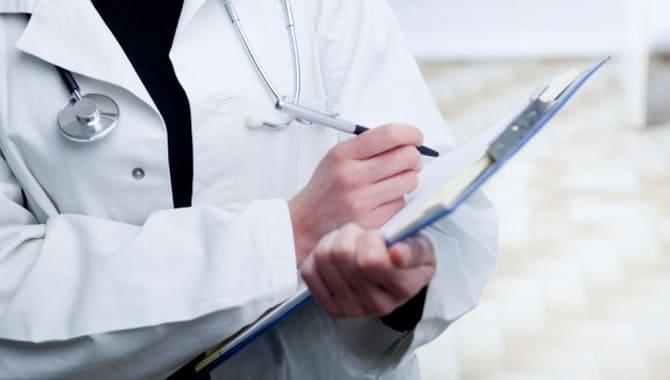
The diet is prepared by a gastroenterologist or nutritionist taking into account the medical history and clinical symptoms of cholecystitis.
Approximate menu for cholecystitis:
| 1 breakfast | 2 breakfast | Dinner | Afternoon snack | Dinner | |
| 1 day | buckwheat porridge, chamomile infusion | 2 slices of rye bread with squash caviar | cream soup with potatoes, chicken breast roll, weak black tea | 2 crackers, rosehip decoction | Beet cutlets, biscuits, vegetable juice |
| Day 2 | low-fat cottage cheese with honey, oatmeal with milk, fruit juice | 1 banana or baked apple | vegetarian cabbage soup, boiled chicken fillet, dried fruit compote | vegetable salad with vegetable oil dressing, a piece of rye bread | rice soup with milk, biscuits |
| Day 3 | cottage cheese casserole with dried apricots, green tea | fruit salad with honey | vegetable puree, 1-2 steam cutlets, compote | baked apple, rosehip infusion | vegetable stew, 2 slices of rye bread |
| 4 day | semolina porridge, crackers with jam, black tea | 1 sweet apple or 3-5 pieces of dried apricots | vegetable soup, boiled turkey, fruit juice | salad of carrots, sweet apples with honey | fruit pilaf, chamomile infusion |
| 5 day | millet porridge, 2 pieces of boiled sausage, milk | homemade yogurt, 2 dryers | stewed cabbage, meatloaf, piece of bran bread, compote | a piece of hard cheese, weak coffee with milk | omelette, vegetable cutlets, low-fat kefir |
| Day 6 | meat pie, rosehip decoction | 100 g dried apricots, mineral water | crumbly pilaf, sliced vegetables, tea | sandwich with hard cheese and coffee | semolina porridge, compote |
| Day 7 | milk soup with noodles, crackers, weak coffee | baked pumpkin with honey | mashed potatoes, steam cutlets, compote | marshmallows, jelly | macaroni and cheese, vegetable juice |
The more varied the diet, the faster the functioning of the gastrointestinal tract will be restored. Therefore, it is recommended to make changes to the menu, taking into account the list of healthy products.
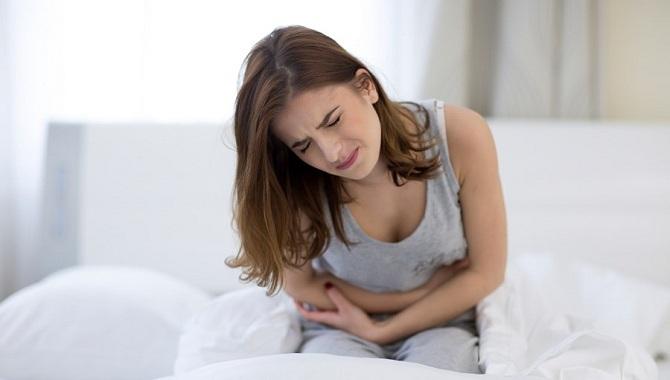
Neglect of diet during relapses of cholecystitis is dangerous due to complications - reactive hepatosis, colic and cholangitis (inflammation of the bile ducts).
Diet for the gallbladder - detailed description, useful tips and menu examples.
The gallbladder is a kind of bile storage facility. The body needs it to process food of unexpected quality and quantity. We constantly “rape” the body with fried, fatty, heavy foods, without listening to its needs, and thereby force the supply of bile to work in a rhythm that is unusual for it. The most common gallbladder disease is cholecystitis in acute and chronic stages. Most of the reasons for the development of this disease depend on the people themselves, caused by the predominance of high-calorie, fatty, fried foods, as well as foods high in cholesterol, in the diet. To treat this disease, a special diet is prescribed.
The gallbladder, like many organs of our body, consists of muscle tissue. It has a contractile function, through which the walls of the bladder contract, which ensures the movement of bile. If a malfunction occurs in the body and the mobility of the biliary tract is impaired, dyskinesia occurs - a prerequisite for gallbladder diseases. Its symptom is periodic pain in the hypochondrium on the right side. In the absence of proper attention on the part of the patient, dyskinesia can lead to cholelithiasis. It is characterized by the formation of stones in the gallbladder and ducts. A relatively small stone can move quite painlessly into the duodenum. This stops the attack. Otherwise, it clogs the bile ducts, which leads to inflammation of the gallbladder, or acute cholecystitis. If the disease progresses more gradually and slowly, this type of disease is called chronic.
Dietary nutrition helps restore impaired function of the gallbladder and bile ducts. To do this, the diet is enriched with products rich in milk protein. At the same time, the amount of meat, fish, fat, and mushrooms is limited. Dishes are prepared by baking or boiling. When dieting, you should monitor the temperature of the food: it should not be too cold or hot. Meals should be taken regularly, in small portions at least 6 times a day; large portions are difficult to digest.
Diet for gallbladder diseases - what foods can you eat?
Dietary nutrition for diseases of the gallbladder is prescribed in combination with other medical interventions. The diet depends on the severity of the disease and the complexity of its course. During exacerbation of cholecystitis, liquid foods are included in the diet: unsweetened tea, juices diluted with water, pureed vegetable soups. You can include porridge in the menu, but only for 3-4 days, after the attack has subsided. With chronic cholecystitis, the diet is more varied and less sparing.
Food should be taken more often, but in small portions (about 300 grams), this will prevent stagnation of bile and promote its timely outflow. Protein foods are recommended, as well as those containing a small amount of fat. They are necessary for the normal functioning of the body. To do this, add a little vegetable or butter to dishes, but heavy animal fats (lard, lamb, beef fat) are contraindicated.
Drinks allowed include weak tea, with milk, jelly, compotes, juices diluted with water, and decoctions of dried fruits. You can eat dried rye or wheat bread. Also allowed are soft-boiled eggs, only without yolks, and steamed or baked omelettes. It is imperative to include soups in the menu, light vegetarian ones, without frying. Porridges should be semi-viscous or crumbly, made from buckwheat, pearl barley, or oatmeal. Raw or baked vegetables and fruits are also beneficial.
Diet for gallbladder diseases - what foods are not allowed
The diet of this diet limits the amount of meat, fish, mushrooms, and excludes fatty, fried and high-calorie foods. It is particularly strict in the case of surgery. The menu in it becomes almost vegetarian, animal and vegetable fats are almost completely excluded from the diet. Fruits, vegetables and herbs containing essential oils are also excluded.
These are onions, radishes, garlic, rhubarb, radishes and others. If it is impossible to completely avoid meat, it is recommended to eat lean poultry, fish, and boiled beef. It is important to consume plenty of fluid - at least 3 liters per day. During this therapeutic diet, any sauces, marinades, mayonnaise, mustard, smoked meats and pickles are excluded.
Diet for gallbladder diseases - menu examples
8-9 hours - tea with milk, vinaigrette with sour cream, cottage cheese, bread, butter, soaked herring (20 g). 12-13 hours - crumbly buckwheat porridge, boiled or baked meat, juices. 16-17 hours - prepare soup from vegetables, serve with sour cream. Boil fish with potatoes and carrots. Sauerkraut salad, fruit compote. 19-20 hours - baked cabbage cutlets, baked pasta with curd filling, fruit and berry compote.
22 hours - bun, fruit and berry jelly.
Recipe examples:Vegetable puree soup with rice
Ingredients: several potatoes, 1/2 cup milk, a little parsley root, one carrot, 1 tbsp rice. l, 1 spoon of homemade low-fat or store-bought sour cream, salt 1g dill to taste.
Cooking method
Wash and cook rice. Peel carrots, potatoes, parsley, chop and boil in water. After this, rub the vegetables and rice through a large sieve, mix with hot milk, let it boil and remove from the heat. Season the soup with salt, sour cream and sugar. When serving, garnish with chopped herbs.
Boiled beef with milk sauce
Ingredients: A piece of beef - about 200 grams, milk - 1/4 cup, potatoes - 4 potatoes, flour - 1 tbsp, grated cheese - 1 tbsp, butter - 1 tbsp, for the broth: roots (parsley) , carrot.
Cooking method
Carefully clean the meat from films and tendons, cook with carrots and roots. Cut the finished beef into thin slices and place in a frying pan. Spread mashed potatoes around, pour milk sauce, sprinkle with grated cheese and bake in the oven (7 minutes). Milk sauce: heat the flour in a saucepan and add hot milk, stir until no lumps remain. Can be served topped with melted butter.
Diet for gallbladder diseases - useful tips and reviews
For such diseases, vegetables and fruits have a beneficial effect. This is due to their pronounced choleretic effect. The juices of fruits and vegetables are particularly active in this regard. An excellent stimulator of bile secretion are vegetables consumed with vegetable oil, which enhances their effectiveness. Therefore, patients are recommended to eat salads and vinaigrettes with vegetable oil. Vitamins contained in vegetables, especially vitamin C, improve the functions of the liver and gall bladder. Fruits and vegetables have a preventive effect in the formation of cholesterol stones in the gall bladder due to their ability to promote the removal of cholesterol from the body.
But not all berries, fruits and vegetables are useful for such diseases. You need to eat exclusively ripe berries and fruits (sweet apples, grapes, cherries and pears, tangerines and oranges, raspberries, strawberries, melons and watermelons). Of the vegetables, only those that promote the separation of bile and regular bowel movements are recommended. These are carrots, beets, turnips, cauliflower, zucchini, pumpkin, fresh tomatoes, cucumbers, lettuce. Not everyone can eat cabbage, potatoes and legumes, because these foods provoke the formation of gases in the intestines. It is forbidden to eat sour apples, cranberries, gooseberries, lemons and other sour fruits; they irritate the mucous membranes. Which can cause spasms and increase pain.
Also, you should not eat vegetables containing oxalic acid (sorrel, spinach) and essential oils (radish, radish, onion, citrus zest), they irritate the liver cells. In addition, oxalic acid can lead to the formation of stones. Fruits and vegetables should be consumed together with other foods. It is forbidden to eat fried vegetables, as well as marinades. When treating diseases of the liver or gall bladder, on the recommendation of a doctor, fasting days are carried out on fruits and vegetables: watermelon, apples, berries, grapes, carrots and others.
zhenskoe-mnenie.ru
Dish recipes
Dietary nutrition affects intestinal motility, the rate of food digestion, and the secretory activity of the liver. The effectiveness of conservative treatment largely depends on the balance of the diet and menu variety.
Most broths (meat, mushroom) are undesirable for cholecystitis. Therefore, they are replaced with dietary soups:
- Pearl barley. The cereal is cooked until half cooked. Simmer chopped onions and grated carrots over low heat. Stewed vegetables and potato cubes are added to barley.
- With zucchini. Small onions and carrots are chopped and simmered over low heat with butter. Potato cubes are added to the vegetable broth, and after 20 minutes, chopped tomatoes and zucchini are added. If desired, season the soup with low-fat sour cream and sprinkle with herbs.
- From rice. Boiled cauliflower and potato cubes are ground through a sieve. The rice is boiled for at least 50 minutes, then ground and added to the vegetables. Season the cream soup with a piece of butter and skim milk.
It is strictly not recommended to add frying cooked in oil to soups. Ready-made dishes are served with rye bread or crackers.
Second courses
Do not eat cold snacks for cholecystitis. Second courses are used as a replacement:
- Meat soufflé. The boiled chicken fillet is ground in a meat grinder, a little milk, salt and 1 beaten egg white and yolk are added. Place the mixture in an oiled frying pan and place in the oven for 10 minutes. Bake at a temperature of 170-180°C.
- Fish with vegetables. Finely chop the zucchini, carrots and onions. Boil the potatoes. Place the prepared vegetables on a baking sheet and place fish fillets on top. Season with low-fat sour cream and bake in the oven for 15 minutes.
Diet No. 5 allows stuffed vegetables with dietary meat, steamed beef cutlets, and chicken casserole.
Salads
The menu for cholecystitis includes vegetable salads:
- Cabbage. Shred white cabbage and season with lemon juice. Grind with a small amount of granulated sugar and add chopped carrots. Season the salad with olive oil.
- Beetroot. Small beets are boiled and chopped into strips. Add 100 g of chopped dried apricots, 2 tbsp. l. sugar and 100 g low-fat sour cream.
Vegetable salads have a stimulating effect on intestinal motility and eliminate problems with stool. Therefore, they are included in the diet for calculous, sluggish and non-calculous cholecystitis.
Dessert
Proper nutrition does not exclude the intake of sweets, but they should not contain prohibited foods. As part of diet No. 5, you are allowed to cook:
- Marmalade. 1.5 cups of cherries sprinkled with 2 tbsp. l. Sahara. The thoroughly mixed mass is crushed in a blender. Add 2 tsp to the puree. agar-agar and leave for 20 minutes. Bring the mixture to a boil over low heat, stirring constantly. Pour the berry puree into molds and cool for 25 minutes.
- Baked apples. Core the apples by pouring a little sugar or honey into the holes. Place the fruit on a baking sheet and add a little water. Bake for 10 minutes.
Diet is a physiological balanced nutrition program that is aimed at restoring the functions of the gastrointestinal tract. Due to the variety of approved products, it is easily tolerated by patients with cholecystitis. Compliance with it prevents relapses of the disease, problems with stool and liver.
Diet for gallbladder inflammation: allowed and prohibited foods
The diet for liver inflammation should include healthy vegetables and fruits. It is thanks to the rich vitamin and mineral composition that the liver is cleansed, and therefore the load on the organ is relieved. So, the following products must be included in the diet:
- Persimmon;
- Beet;
- Walnuts;
- Avocado;
- Lemon;
- Apples;
- Turmeric;
- Green tea.
Everyone knows that beets help cleanse the liver due to the high level of flavonoids in its composition. Drinking beet juice is very beneficial. You can prepare the following cocktail: juice of 1 small beet, half a lemon, half an apple. A tablespoon of vegetable oil is added to the cocktail and drunk. Drink the drink for 10 days.
Persimmons are famous for their high levels of fiber, natural sugars that are converted into healthy glycogen. Nuts are sources of fatty acids. Nuts are good at cleansing the liver of toxins and heavy metals. Lemons speed up metabolic processes in the body and remove toxins. Regular consumption of avocados reduces the level of bad cholesterol in the blood, which also relieves the liver. Green tea will help speed up the flow of bile, which prevents its stagnation and the development of jaundice and cholelithiasis.
You should choose sweet apples, not sour ones. They are useful both fresh and baked. Apples should be consumed not only in the treatment of liver inflammation, but also for the prevention of other diseases of the gland and gall bladder. You can improve and restore liver function through regular consumption of greens. Also, the diet for any liver diseases, including inflammation, should contain the following foods:
- Crackers, not fresh bread;
- Vegetable and cereal soups, low-fat meat broths in “third” water;
- Lean types of meat: rabbit, turkey, chicken breast, veal;
- Low-fat fish: hake, carp, pike, pangasius;
- Dairy products;
- Fruits (sweet only);
- Vegetables: carrots, beets, cabbage, zucchini, potatoes, pumpkin;
- Chicken eggs (no more than 1 per day);
- Cereals.
Diet for liver and pancreas disease includes:
- Soups in vegetable broths with vegetables (in case of exacerbation - ground). Cereal soups are well boiled or kneaded, seasoned with sour cream, butter or cream. The most acceptable for these diseases are puree soups.
- Boiled and grated (in case of exacerbation) potatoes, pumpkin, zucchini, carrots, cauliflower, beets, green peas. After a while, the consumption of finely chopped boiled vegetables is allowed, and during the period of remission - raw (grated carrots, cucumbers and pumpkin, peeled tomatoes).
- Porridge with water: semolina, oatmeal, buckwheat, rice. Pearl barley, corn, millet and barley are limited. Porridges are well boiled or ground, and also prepared from flour (buckwheat, oatmeal, rice) with the addition of milk. You can make a soufflé from cereals, pouring jelly or jam.
- Lean chicken, beef, veal or rabbit. Boiled chicken and rabbit are consumed in pieces; other types of meat are prepared in the form of chopped, steamed products.
- Low-fat fish (pike perch, hake, cod, pollock, perch, carp, pike, whiting), steamed - in pieces or in the form of cutlets. For pancreatitis, stewed and poached fish is not allowed, as it contains a large amount of extractive substances.
- Low-fat fermented milk products. Sour cream and milk are allowed as additives in dishes, since whole milk is poorly tolerated. You can include mild grated cheese, low-fat cottage cheese and dishes made from it in your diet. In case of calcium deficiency, which is observed in patients with pancreatitis, it is better to consume calcined cottage cheese.
- Wheat bread, dried or crackers. It is possible to eat unsweetened cookies.
- White omelettes from 1-2 eggs daily.
- Vegetable-based sauces that diversify your diet. They are prepared on the basis of unfried flour with the addition of sour cream or milk.
- Baked sweet apples and pears and pureed dried fruits. Jams, jelly, mousses and natural marshmallows prepared with xylitol. Mashed raw fruits are allowed to a limited extent.
- For liver diseases, the list of fruits is wider - all ripe fruits (except sour varieties) are allowed, baked and raw.
| Proteins, g | Fats, g | Carbohydrates, g | Calories, kcal | |
Vegetables and greens | ||||
| eggplant | 1,2 | 0,1 | 4,5 | 24 |
| zucchini | 0,6 | 0,3 | 4,6 | 24 |
| cabbage | 1,8 | 0,1 | 4,7 | 27 |
| broccoli | 3,0 | 0,4 | 5,2 | 28 |
| carrot | 1,3 | 0,1 | 6,9 | 32 |
| cucumbers | 0,8 | 0,1 | 2,8 | 15 |
| parsley | 3,7 | 0,4 | 7,6 | 47 |
| tomatoes | 0,6 | 0,2 | 4,2 | 20 |
| pumpkin | 1,3 | 0,3 | 7,7 | 28 |
| dill | 2,5 | 0,5 | 6,3 | 38 |
Fruits | ||||
| bananas | 1,5 | 0,2 | 21,8 | 95 |
| pears | 0,4 | 0,3 | 10,9 | 42 |
| apples | 0,4 | 0,4 | 9,8 | 47 |
Nuts and dried fruits | ||||
| raisin | 2,9 | 0,6 | 66,0 | 264 |
| dried figs | 3,1 | 0,8 | 57,9 | 257 |
| dried apricots | 5,2 | 0,3 | 51,0 | 215 |
| dried apricots | 5,0 | 0,4 | 50,6 | 213 |
| prunes | 2,3 | 0,7 | 57,5 | 231 |
Cereals and porridges | ||||
| buckwheat (kernel) | 12,6 | 3,3 | 62,1 | 313 |
| oat groats | 12,3 | 6,1 | 59,5 | 342 |
| rice | 6,7 | 0,7 | 78,9 | 344 |
Flour and pasta | ||||
| pasta | 10,4 | 1,1 | 69,7 | 337 |
| noodles | 12,0 | 3,7 | 60,1 | 322 |
| buckwheat noodles | 14,7 | 0,9 | 70,5 | 348 |
Bakery products | ||||
| bran bread | 7,5 | 1,3 | 45,2 | 227 |
| whole grain bread | 10,1 | 2,3 | 57,1 | 295 |
Confectionery | ||||
| jam | 0,3 | 0,2 | 63,0 | 263 |
| jelly | 2,7 | 0,0 | 17,9 | 79 |
| marshmallows | 0,8 | 0,0 | 78,5 | 304 |
| fruit and berry marmalade | 0,4 | 0,0 | 76,6 | 293 |
| paste | 0,5 | 0,0 | 80,8 | 310 |
| Maria cookies | 8,7 | 8,8 | 70,9 | 400 |
Raw materials and seasonings | ||||
| honey | 0,8 | 0,0 | 81,5 | 329 |
| sugar | 0,0 | 0,0 | 99,7 | 398 |
Dairy | ||||
| kefir 1.5% | 3,3 | 1,5 | 3,6 | 41 |
| Ryazhenka | 2,8 | 4,0 | 4,2 | 67 |
Cheeses and cottage cheese | ||||
| cottage cheese 1% | 16,3 | 1,0 | 1,3 | 79 |
Meat products | ||||
| beef | 18,9 | 19,4 | 0,0 | 187 |
| rabbit | 21,0 | 8,0 | 0,0 | 156 |
Bird | ||||
| boiled chicken breast | 29,8 | 1,8 | 0,5 | 137 |
| boiled chicken drumstick | 27,0 | 5,6 | 0,0 | 158 |
| boiled turkey fillet | 25,0 | 1,0 | — | 130 |
Eggs | ||||
| soft-boiled chicken eggs | 12,8 | 11,6 | 0,8 | 159 |
Fish and seafood | ||||
| flounder | 16,5 | 1,8 | 0,0 | 83 |
| pollock | 15,9 | 0,9 | 0,0 | 72 |
| cod | 17,7 | 0,7 | — | 78 |
| hake | 16,6 | 2,2 | 0,0 | 86 |
Oils and fats | ||||
| butter | 0,5 | 82,5 | 0,8 | 748 |
| olive oil | 0,0 | 99,8 | 0,0 | 898 |
| sunflower oil | 0,0 | 99,9 | 0,0 | 899 |
Non-alcoholic drinks | ||||
| water | 0,0 | 0,0 | 0,0 | — |
| mineral water | 0,0 | 0,0 | 0,0 | — |
| green tea | 0,0 | 0,0 | 0,0 | — |
Juices and compotes | ||||
| apricot juice | 0,9 | 0,1 | 9,0 | 38 |
| carrot juice | 1,1 | 0,1 | 6,4 | 28 |
| peach juice | 0,9 | 0,1 | 9,5 | 40 |
| plum juice | 0,8 | 0,0 | 9,6 | 39 |
| tomato juice | 1,1 | 0,2 | 3,8 | 21 |
| pumpkin juice | 0,0 | 0,0 | 9,0 | 38 |
| rose hip juice | 0,1 | 0,0 | 17,6 | 70 |
| * data is per 100 g of product | ||||
The liver diet involves a balanced, varied daily diet, since it is designed for a long period of time. Possible recipes for preparing dietary dishes:
- Chicken dumplings with cottage cheese. Grind the poultry meat 2-3 times, add low-fat cottage cheese, pureed through a sieve. Mix thoroughly, add beaten egg white, a teaspoon of butter. Steam for 15–20 minutes.
- Pumpkin puree soup with oat flakes. Peel the pumpkin, cut into cubes, boil until half cooked, 15–20 minutes. Then transfer the cooked vegetable into a deep frying pan with a thick bottom, simmer in water under the lid for 10 minutes, then add oatmeal (2 tbsp per 100 g of pumpkin puree). Simmer for another 10–15 minutes, stirring constantly, and grind the finished mixture with a blender. Add 1 tsp. sugar and 1/2 teaspoon butter (if the recommended diet allows).
- Beetroot and carrot salad. Boil or steam unpeeled vegetables, peel, grate on a coarse grater, add vegetable oil and a little prunes.
- Doctors regularly tell their patients about the liver’s love for warm and sweet things. It was from this that nutritionists started, forming a list of products that are allowed for consumption while following a diet for liver and gallbladder diseases.
- The patient can eat soups and broths cooked with vegetables and containing cereals and noodles. Puree soups will be very useful. One of the ingredients of the first courses may be low-fat cream, but you will have to refuse frying.
- You can only eat yesterday's bread and bakery products. It is allowed to eat savory pastries and bread, which contains wholemeal, peeled or sifted rye flour.
- Meat and poultry should be chosen as lean. They should be steamed, boiled, baked. It is worth giving preference to beef, lean pork, rabbit, turkey, and chicken. The skin must be removed from poultry before consumption.
- From fish, it is preferable to choose pike, pike perch, carp, perch, navaga, and cod. They can be baked and soaked, or made into soufflés and steamed cutlets.
- Dairy products are allowed to be eaten in any quantity. Preference should be given to cottage cheese casseroles, soufflés, lazy dumplings, light yoghurts (used as a salad dressing), low-fat and mild cheese.
- The consumption of eggs will have to be kept to a minimum: one egg a day (boiled or as a steamed omelet) will be quite enough. It is better to give preference to protein, but if the patient’s condition does not cause concern, he can also eat the yolk once or twice a week.
- You should definitely add cereal to your daily diet. Particular attention should be paid to buckwheat, semolina, rice, oatmeal and porridges, puddings, and casseroles prepared from them.
- Vegetables and fruits are a natural source of fiber. They can be consumed fresh, including in the form of salads and processed (in the form of purees and casseroles). Preference should be given to potatoes, cauliflower, pumpkin, zucchini, sour sauerkraut, sweet fruits and berries.
- In case of liver and gallbladder diseases, the presence of sweets is allowed in the daily diet. So, you can eat honey, marshmallows, marmalade, jam, jelly.
- It is allowed to drink not very strong tea, tea with milk, barley or rye coffee drink, coffee with milk, non-acidic fruit and berry compotes and juices, jelly and herbal decoctions. All drinks must be warm.
- You can also eat fats, but they must be vegetable. These are oils of all types, used as a dressing and consumed fresh.
- Among herbs and spices, it is allowed to use parsley and dill, cinnamon, vanillin, bay leaf. Other seasonings should be treated with great caution.
Products allowed for consumption in diet No. 5 can benefit the liver and gall bladder and improve their functioning. The main thing is not to forget that they should be consumed in moderation and in no case overeat.
Patients with liver and gallbladder diseases cannot eat many foods. You should refuse:
- fatty products (pork, lamb, baked goods, cakes, etc.);
- mushrooms;
- lard;
- broths (mushroom and meat);
- butter;
- fatty cheeses;
- fat cottage cheese;
- canned food;
- margarine and lard;
- fatty fish;
- seasonings;
- smoked meats;
- some types of greens and vegetables;
- fresh rye bread;
- chocolate;
- ice cream;
- alcohol;
- sweets;
- coffee and coffee drinks;
- carbonated drinks;
- cocoa;
- strong tea;
- nuts;
- sour fruit juices.

